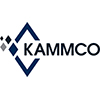 (April 2024) – During the past decade, 41 states have reported medical malpractice verdicts of $10 million or more. These "nuclear" or "shock" verdicts have become more common in recent years.
(April 2024) – During the past decade, 41 states have reported medical malpractice verdicts of $10 million or more. These "nuclear" or "shock" verdicts have become more common in recent years.
Examples of Nuclear Verdicts in the Last Three Years
- A jury verdict for $111 million against a hospital in Minnesota in a case involving a young man who developed compartment syndrome following a soccer injury. Notably, $110 million of this verdict was for non-economic damages – commonly referred to as "pain and suffering."
- A $97 million verdict in Iowa City, IA, in which a plaintiff attorney targeted OB-GYN health care providers and their clinic following a severe fetal brain injury, which caused the clinic to file bankruptcy.
- A verdict of $27 million against an urgent care clinic in Des Moines, IA. The plaintiff attorney attacked health care providers who did not diagnose a case of meningitis in a patient who presented to the clinic with flu-like symptoms. Again, most of the money awarded in this verdict was for non-economic damages.
The Heavy Burden of the Plaintiff Litigation Industry
The overall cost of malpractice tort litigation to the health care system is hard to quantify but is estimated to be between $50 and $150 billion annually. Health care providers and their liability insurers bear the initial brunt of these costs, but ultimately, patients bear these costs—in the form of higher health care costs, less access to quality health care and the potential for poorer health care outcomes due to defensive medicine.
The Role of Social Inflation
The shock verdict trend may be a symptom of a broader phenomenon called "social inflation." Insurers use the term "social inflation" to describe the rising costs of claims due to the interplay of complex societal factors, including those discussed below.
Advertising and Public Persuasion Campaigns by the Plaintiff Litigation Industry
Plaintiff attorneys promote tort litigation and frame their marketing efforts in the language of social justice – though they usually leave out that a large portion of the "justice" ends up in their own pockets. Plaintiff attorney advertising has been increasing across the country. For example, between 2017 and 2021, attorney advertising in Kansas increased approximately 64 percent and exceeded $24 million.
Public Desensitization to the Value of Money and Persistent Economic Inflation
In recent years, the public has been inundated with news skewing its perception of money: Elite athletes and corporate figures make nine—and ten-figure salaries. Billions of dollars in "free" money are provided to businesses and individuals through public programs to address COVID disruptions. Fast food restaurants charge $18 for Big Mac meals. It's not surprising some juries may now feel more comfortable awarding multimillion-dollar verdicts to someone who has suffered a serious injury or an unexpected catastrophic health care outcome.
Diminished Person-to-Person Connections Between Patients and Providers
These diminished connections can be caused by changes in how patients utilize health care, changes in health care delivery models and increased administrative burdens on providers tending to reduce face-to-face time with patients. It's much easier to blame and shame someone viewed as an anonymous service provider than someone viewed as a personally trusted professional.
Plaintiff Attorneys and a Toxic Incentive Structure
Plaintiff attorneys profit from contingency fee agreements, which require the injured client to pay their lawyer a large portion of any settlement or verdict—often 40-50 percent. Because the attorney's cut is taken after all litigation expenses are deducted, it's not uncommon for the injured patient to receive only around 25 percent of the settlement or verdict.
Even though juries find most claims litigated by medical malpractice plaintiff attorneys to lack merit if the claim goes to trial, these contingency fee agreements create incentives for plaintiff attorneys to artificially extend litigation and drive up settlement demands. The rise of third-party litigation funding (a process by which hedge funds and other financiers invest in lawsuits in exchange for a percentage of any settlement or judgment) has further exacerbated this toxic incentive structure.
Good News for Kansas Providers
No Nuclear Verdicts in Kansas
Kansas juries generally continue to be reasonable in assessing malpractice claims against health care providers. This is despite the best efforts of the plaintiffs' litigation industry to drive up jury verdicts and settlement values, including their partially successful attempts to undermine the Kansas statutes designed to promote health care availability, such as statutory caps on excessive jury verdicts.
KAMMCO Stands up for Health Care Providers and Wins
KAMMCO is not afraid to challenge the plaintiff litigation industry by taking cases to trial rather than settling. KAMMCO-insured health care providers have won approximately 90 percent of the medical malpractice cases that have gone to trial during the past decade. The last ten jury trials of claims against KAMMCO-insured providers have resulted in a complete defense verdict in favor of the health care provider.
The KAMMCO Approach to Claims
Some of the strategies and methods recently identified nationally as effective ways to deal with the new, more challenging malpractice claims environment are the same things that have been the hallmark of KAMMCO's approach to claims for nearly 35 years.
______________________________
KAMMCO remains vigilant in monitoring the national trend of excessively high monetary awards in medical malpractice claims. They continue to do their part by steadfastly defending accused health care providers and pushing back on the plaintiff litigation industry's attempts to bully health care providers into feeding the litigation machine by paying settlements for non-meritorious claims.